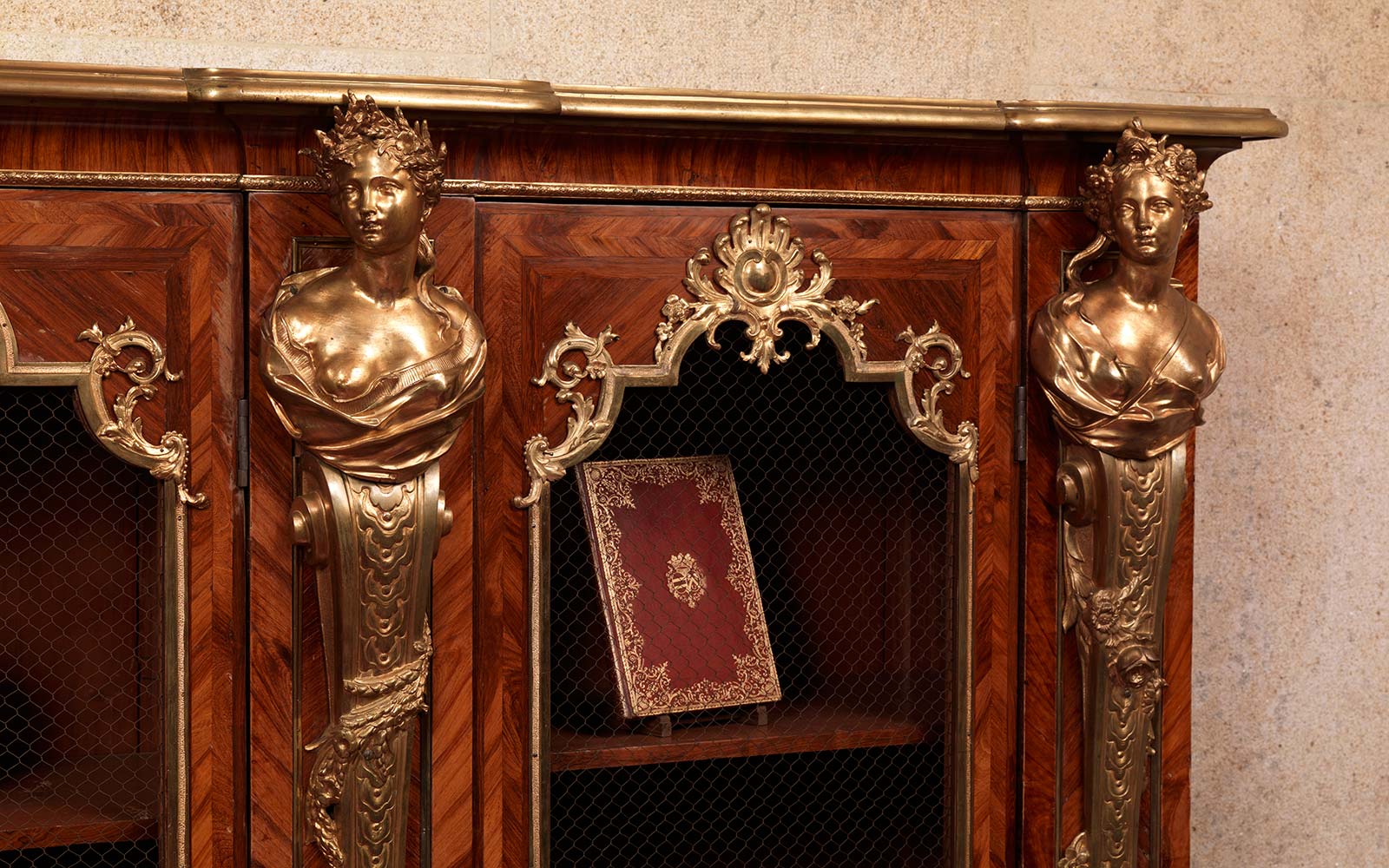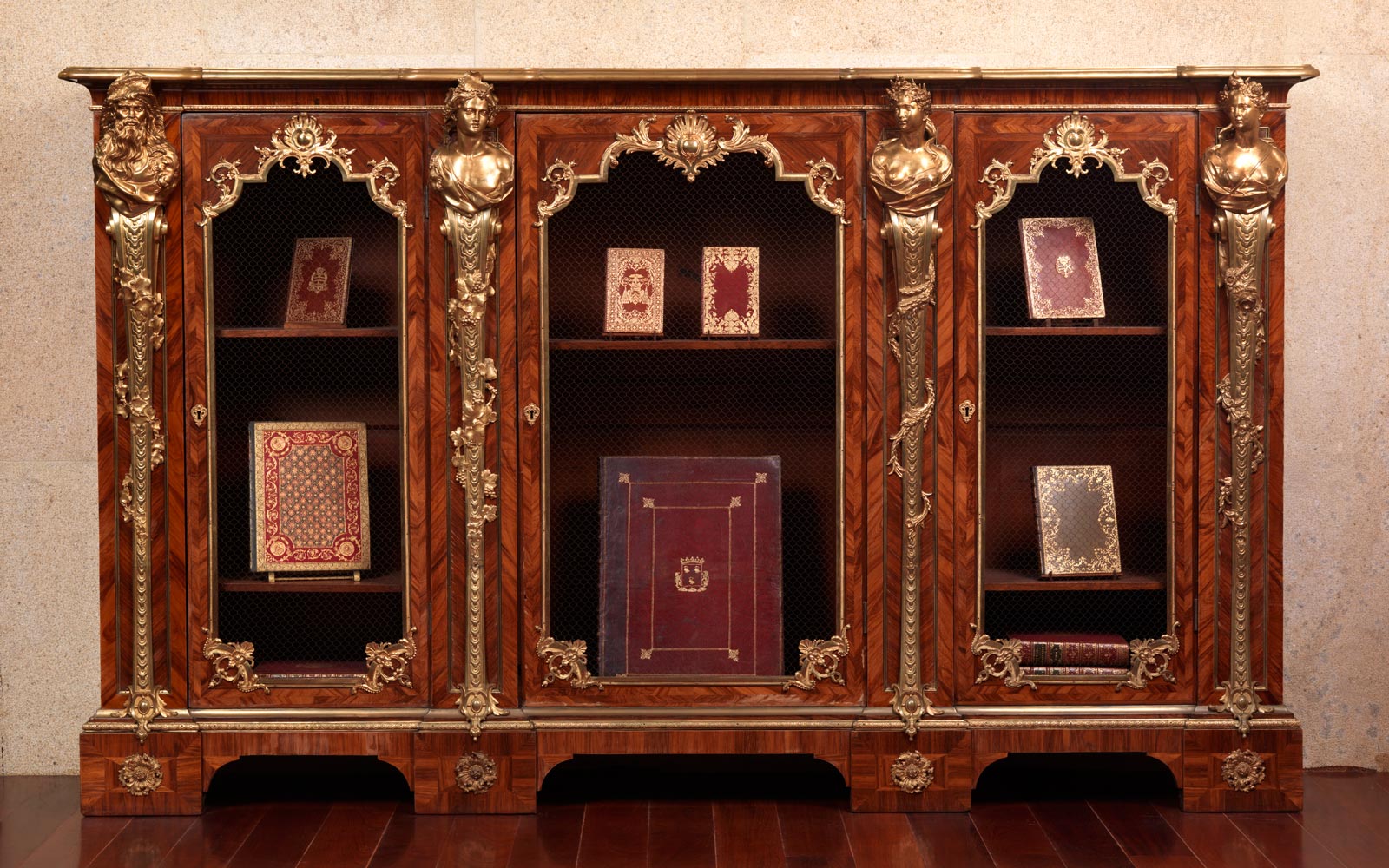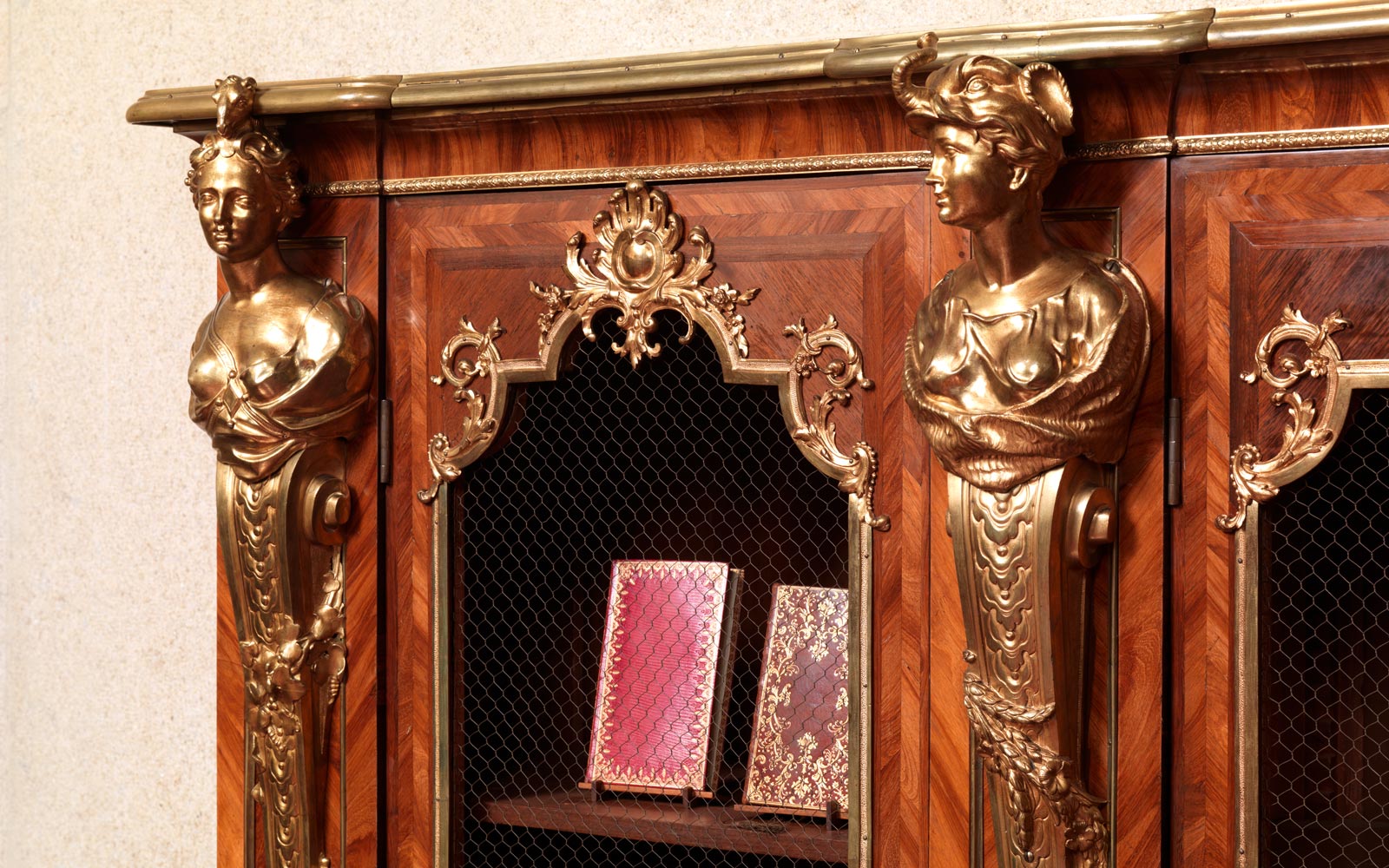Pair of bookcases by Charles Cressent

Cabinets were the most popular type of furniture in 1700–30, taking on diverse forms and adapting to the multi-faceted demands of an increasingly sophisticated society. Intended for storing different objects, such as porcelains, shells, medals, coins, books and ivories, cabinets gradually transformed and gave rise to new types of furniture: bookcases, medal cabinets and corner cupboards, among others.


These imposing bookcases with a three-part façade have three doors decorated with four chiselled, gilded bronze pilasters topped by busts. The busts on one of the bookcases represent the four seasons of the year, while on the other they depict the four corners of the Earth, symbolised by different headwear worn by the figures. An old man with a long beard represents the winter and three female figures represent the other three seasons: autumn, with vine leaves and bunches of grapes, summer, with wheat ears, and spring, with a garland of flowers. The attributes for the four parts of the world are: a horse for Europe, an elephant for Asia, feathers for America and a unicorn for Africa. The wide openings of the doors are framed in bronze, with simple, symmetrical motifs in the form of scrolls and shells in the corners and on the upper part of the frame. The two bookcases feature marquetry in yellowheart and amaranth wood with herringbone and chequered geometric motifs.

The themes used to decorate these types of cabinets were often related to their contents. In the case of these bookcases, the main themes are nature in all its diversity and geography, with depictions of exotic, far-off places. It is possible that these were the topics explored in the books stored in the bookcases, which were widely studied in the 18th century.
Charles Cressent was the most famous cabinet-maker of his time. The son of a sculptor and grandson of a cabinet-maker, Cressent moved to Paris and completed his training in sculpture at the Académie de Saint-Luc, where he began to study in 1714. When he married the daughter of Joseph Poitou, cabinet-maker to the Regent, Cressent began to dedicate his time entirely to cabinet-making. His work brilliantly combines the two art forms – sculpture, with his chiselled, gilded bronzes displaying great artistic sensibility, and cabinet-making, with his marquetry and veneers in geometric patterns made from exotic woods designed to showcase the bronze.
Although he worked until the second half of the 18th century, during the reign of Louis XV, Cressent was the quintessential Regency cabinet-maker, remaining faithful to the ‘style’ he had created in the 1720s–30s.
Text by Clara Serra
Curator of the Calouste Gulbenkian Museum